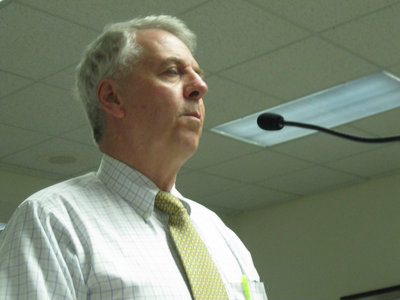Once seen as the highest risk for terrorist attack in New Jersey, Hudson County has seen its federal Homeland Security grant funds slashed over the last three years from about $2.3 million in 2009 to just under $500,000 for 2012, with another cut proposed by a state panel that would give the area about $100,000 in 2013.
“We’ve led the state for about seven years,” said Jack Burns, Hudson County Coordinator, Northern N.J. Urban Areas Security Initiative, at a recent county freeholders’ board meeting. “But in 2010, we saw a cut in funding and last year we saw another cut of 50 percent.”
But next year, the county will receive the deepest cut as a state panel changes the rules. They will distribute $100,000 to every county in the state, regardless of risk. Then the panel will evaluate the risk factor for possible additional funding.
County officials see this as a political boondoggle. Non-threatened counties petition the state to get their piece of the federal pie, even though the funding is supposed to be used in areas that face the most risk of a possible terrorist attack. Hudson County is at the center of what the FBI called “the most dangerous 20 miles in America,” with many communications operations, fuel storage facilities, transportation hubs and other critical infrastructure, which Homeland Security funds are dedicated to address.
Petition for change necessary
Burns said that members of the administration, public officials, and regional Homeland Security groups have petitioned the state legislature to halt the changes, saying that the $100,000 is barely enough to maintain operations in case of an emergency but cannot improve security measures.
Freeholder Jose Munoz, however, said he has frequently questioned how this money was being spent and felt that until he had a breakdown of the spending of past funds, he would have a problem supporting the effort to petition the state to keep some of the old formula.
He pointed to the development of the emergency sirens that he believed were an antiquated system and that more emphasis should be made in supplying local law enforcement.
Burns, however, said that all of the police authorities are involved in the Homeland Security board and each express needs of their own department. The Homeland Security board is made up individuals who represent municipal police, the prosecutor’s office and other law enforcement bodies, including members of the Port Authority of New York and New Jersey.
“The prosecutor’s office, the sheriff’s office, all law enforcement agencies, hospitals and ambulance services and just about every first responder in the region sits on that body and each agency expresses what they need,” Burns said.
Freeholder Anthony Romano, who heads the Homelands Security Committee for the county, said the group meets in Kearny where needs are discussed. Needs could include anything from ballistic shields to trailers.
Funding covers equipment needs for law enforcement agencies such as new radio systems. Federal Homeland Security funds have been used to purchase surveillance equipment for critical risk areas such as fuel storage facilities in Bayonne.
Burns said funds also pay for regional exercises that test the readiness of the local Homeland Security systems, which are done at intervals.
“We can argue over how the money is spent, but first we have to get the money.” – Bill O’Dea
___________
How to spend the money received
Freeholder Bill O’Dea said that while Munoz may have legitimate concerns regarding the spending of the money, the problem is that the county needs to fight to retain the proper allotment.
“The big picture here is that someone in the state is deciding what we should get,” O’Dea said. “We can argue over how the money is spent, but first we have to get the money.”
State official have found creative ways to divvy up the money so that non-critical areas would see additional funds, Burns said. In one case, forests and woodlands in more rural areas were excluded in order to increase the population densities of those areas and qualify for additional funding. But when he asked that the maps exclude 18 square miles of marsh land in Hudson County, the state would not.
Burns said the Hudson County regional Homeland Security, which covers six counties as well as Jersey City and Newark, is considered one of the most efficiently run organizations in the state.
“We are lauded around the state,” he said.
Freeholder Jeff Dublin, who worked on the road department in Jersey City during the attacks on Sept. 11, 2001, said he believes the funding has helped make the county a safer place.
“This county is well prepared to handle a lot of situation that we didn’t know could happen when the World Trade Center was taken down,” he said. “I feel we are a lot safer now than we were then.”
To comment on this story on-line, go to our website, www.hudsonreporter.com. Al Sullivan may be reached at asullivan@hudsonreporter.com.
